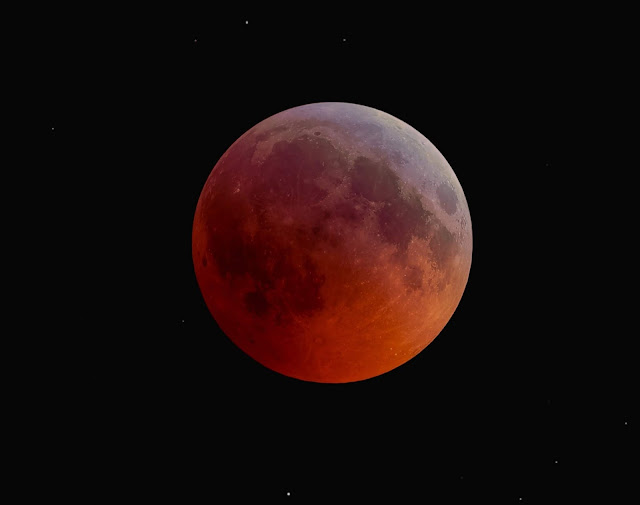 |
| IC 410 and NGC 1893... |
Type: Emission nebula with open cluster
Constellation: Auriga
Distance: 12000 light years
Date: January 29th. 2019
Equipment: ATIK 460EX, Vixen 114mm f5.3 ED114 refractor, NEQ6 mount, guiding with Lodestar X2/PHD
Subframes: 16 x 600s H-alpha, 10 x 600s OIII, 6 x 150s each for RGB (2x2 binned), no flats, hot pixel removal in Astroart (no main frame darks).Equipment: ATIK 460EX, Vixen 114mm f5.3 ED114 refractor, NEQ6 mount, guiding with Lodestar X2/PHD
IC 410 is an emission nebula partly obscured by dark, dense molecular clouds, and forms part of a larger star forming region that also contains the Flaming Star Nebula (IC 405, which lies approximately 1.5 degrees to the west of IC 410). The cluster within, NGC 1893, was discovered in 1827 by John Herschel, but the surrounding nebula IC 410 was not detected until 1892, by German astronomer and astrophotographer Max Wolf.
The nebula occupies an area in the sky approximately 40 arc-minutes in diameter (a
bit larger than the full moon). In reality, the nebula is approximately 100 light years across. Visually,I was once lucky enough to just about make out the brightest areas of IC 410 in
an 9.25-inch SCT on a night of excellent transparency from a suburban sky. The cluster NGC 1893 appeared to be enmeshed in a faint haze of nebulosity, with fainter lobes to the west and south of the cluster that required a low power (40mm) eyepiece and an OIII filter to provide the necessary contrast. It is not surprising that John Herschel missed it visually.
IC410 is illuminated by fluorescence caused by the excitation
of its gaseous atoms by radiation from the hot stars of the open star cluster (NGC1893)
that lies in the centre of the nebula that gave birth to it. This star cluster is about 4 million years
old, but in astronomical terms it is still very young.
 |
| The "tadpoles" of IC 410 (detail from main image) |
IC 410 can be found high in the Orion Milky Way in the constellation Auriga, as indicated in the Stellarium sky chart below:
The striking green/blue colour visible in the main image arises
from the fluorescence of triply-ionised oxygen atoms (OIII) which seems to be
unusually strong in this particular nebula (the orange/red is from ionised hydrogen –
Hydrogen alpha emission – which is the principle light given off by most emission
nebulae).
Atmospheric stability and clarity were rather poor when I acquired data for the image, but this
was the first clear spell that I had been able to make use of in the last six
weeks, so beggars can’t be choosers. The
guiding wasn’t brilliant (about 1.2 arc-seconds RMS) and the resultant sub-frames were also very
“noisy” due to a high haze of moisture that cut my gathering of OIII subframes short.
Fortunately, the signal was pretty strong in both Ha and OIII and the image stacks, although few in number, did not require much of a stretch.
Fortunately, the signal was pretty strong in both Ha and OIII and the image stacks, although few in number, did not require much of a stretch.
The narrowband colour data was RGB combined in Astroart (red
= Ha, green =70/30 OIII/Ha, blue = OIII).
The RGB frames were also RGB combined and the result blended with the
narrowband stack in PSP to give star colours.

